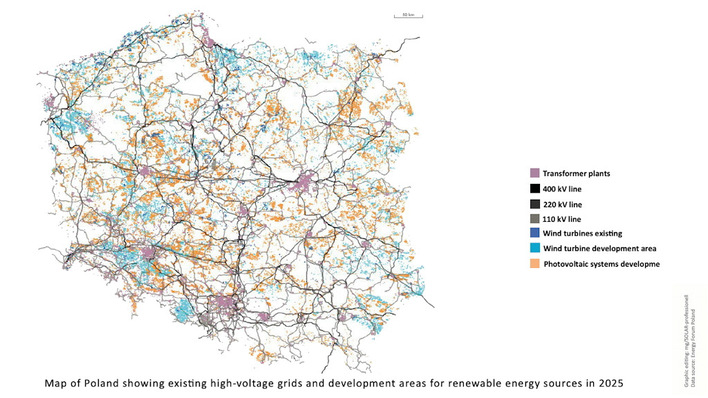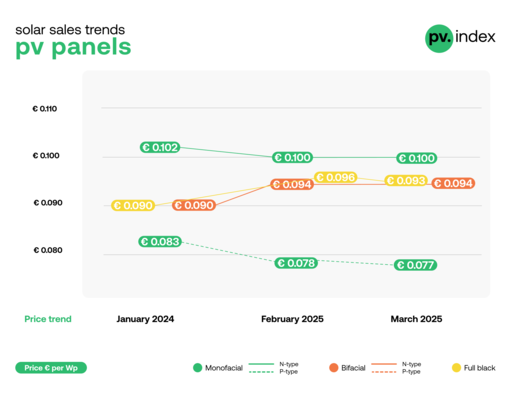In order to achieve the decarbonisation goals and limit global warming to a maximum of 1.5 degrees as agreed in Paris, the expansion of photovoltaics to 75 terawatts of output is necessary worldwide. This is the result of a workshop of solar researchers from all over the world in Freiburg chaired by the Fraunhofer Institute for Solar Energy Systems (ISE). In addition to researchers from Fraunhofer ISE, scientists from the National Renewable Research Laboratory (NREL) in Golden, Colorado, and the National Institute of Advanced Industrial Science and Technology (AIST) in Tokyo and 38 other institutions from 15 countries participated.
25 per cent more per year is needed
In their projections, the researchers assume that the world population will increase to ten billion by 2050. Energy consumption will also continue to rise, especially in the global South. The 75-terawatt target means that the expansion of photovoltaics must increase by 25 per cent every year for the next ten years and continue steadily thereafter. For at present, just one terawatt of solar power capacity has been installed. 74 more terawatts must follow within the next 23 years. "Identifying a target range for the required photovoltaic expansion that is consistent with a realistically achievable path to climate goals and a possible photovoltaic production build-up is crucial to being able to set economic and political goals," says Andreas Bett, Institute Director of Fraunhofer ISE, explaining the need for a specific expansion forecast.
See also: Solar expansion - Austria just shy of the gigawatt mark
It is no longer an option to lower growth forecasts for photovoltaics and instead rely on other energy sources or wait for last-minute technological miracles to occur, argue the scientists. They are optimistic that the necessary expansion will succeed if the remaining political, administrative and energy industry obstacles are removed and no new ones are created.
Industry grows with it
To achieve the necessary growth rate, the solar industry itself must also grow. However, this is in line with what photovoltaics has achieved in the past decades. The researchers point out that the photovoltaic industry has so far doubled its annual production and installed output. At this rate, the next terawatt of installed output is expected to be reached in 2024. The planned expansion of polysilicon capacity also suggests that a production rate of one terawatt per year could be reached by 2028 or earlier. Advantageously, the cost of building a new production line for solar cells and modules has fallen by 50 per cent every three years over the past decade.
Research must continue
But research must also continue unabated. The expansion targets can only be achieved with higher efficiency of modules and cells. Here, too, the researchers are confident that they will succeed. After all, the efficiency of solar cells has risen by an average of 0.5 per cent per year over the last 20 years. Increasingly larger cell sizes have made it possible to increase the output per cell from about 2.5 to ten watts during this period. "We've made great progress, but the goals need to be pursued and accelerated," says Nancy Haegel, director of the National Center for Photovoltaics at NREL. Keiichiro Sakurai, senior researcher at AIST, adds, "Technological developments have played and will continue to play a major role in increasing efficiency and lowering solar module costs."
Industrialising research results faster
Transferring research results to mass production is also faster. It took only five years, for example, for the Topcon technology, which is being developed to a large extent at Fraunhofer ISE, to reach mass production. Recent analyses show that it now takes only about three years to transfer average cell efficiency from the laboratory to mass production.
Also interesting: Agrivoltaics-guideline now available in English
But there are also challenges, especially with regard to the supply chain. This is mainly due to the limited material resources. The solar industry, for example, now consumes ten per cent of the world's total silver production and is thus likely to become the main problem in terms of material availability. But here, too, the researchers are confident that silver can be replaced by copper or aluminium in the foreseeable future. Nevertheless, it is important to think in cycles and to plan for eco-design and recycling during development.
Shifting supply chains
In addition, the supply chains must be relocated. The components for solar systems must be manufactured where they are used. This would not only reduce logistics costs, but also the emissions associated with transport. It would also ensure a continuous supply of components.
The entire results of the workshop can be found in a jointly written article "Photovoltaics at multi-terawatt scale: Waiting is not an option" in the current issue of Science magazine for download. (su/mfo)








